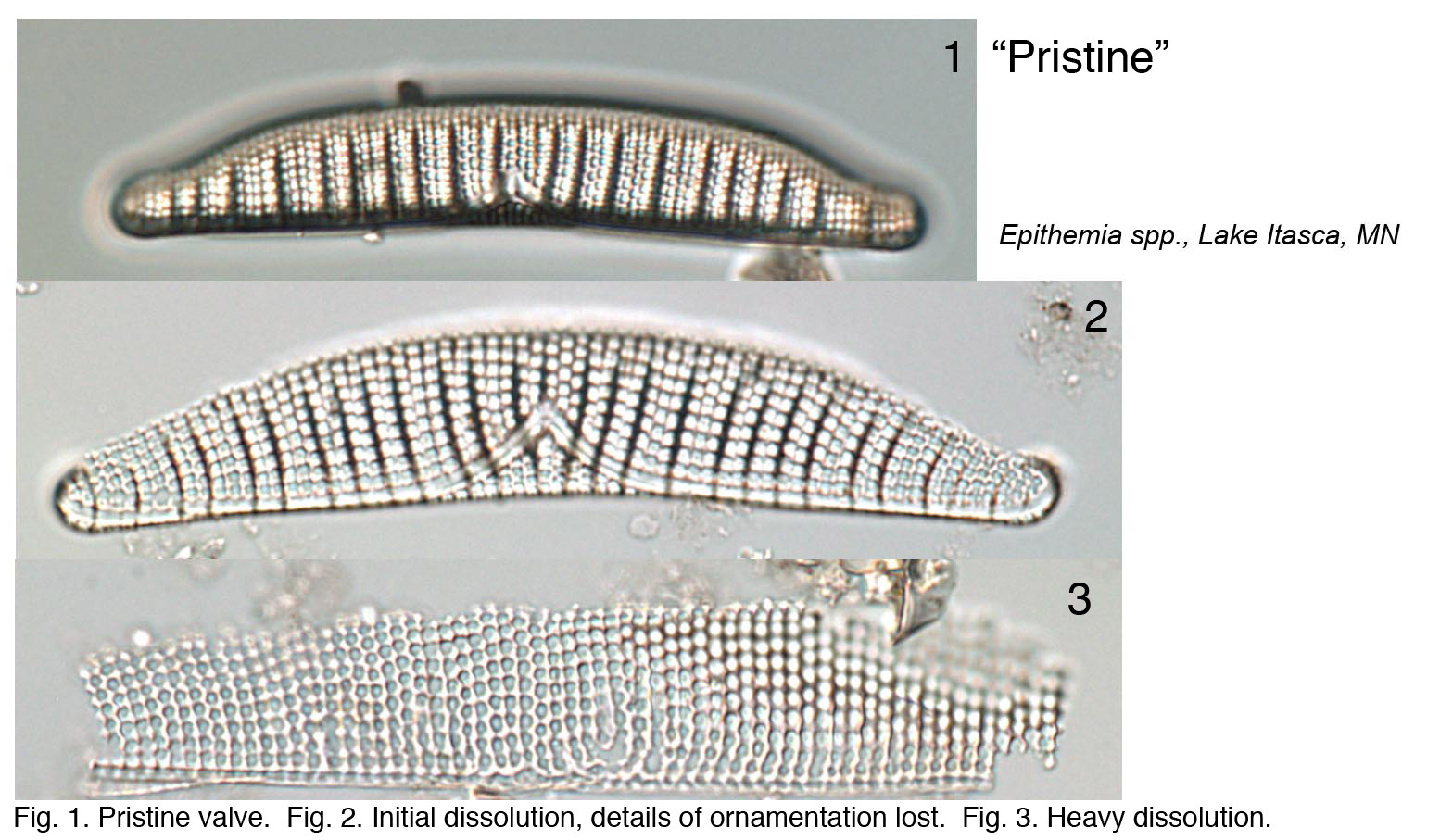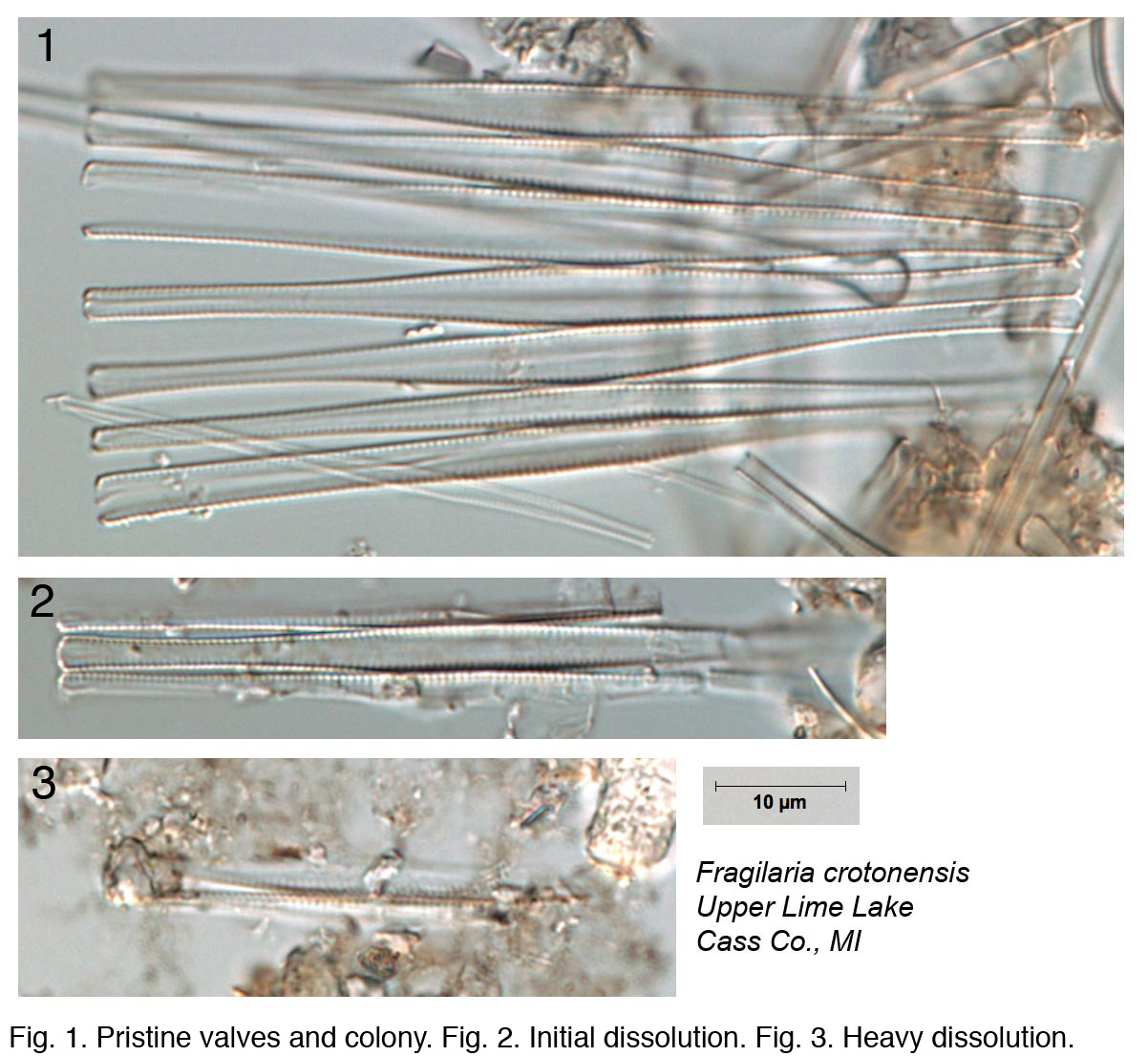
Diatom Preservation
The condition of diatom microfossils in a smear slide is a reflection of the depositional environment and will determine their suitability and usefulness as environmental indicators. Several environmental conditions enhance the dissolution of diatoms: breakage, salinity, alkalinity, and silica-poor environments. Diatom valves are composed of biogenic opaline silica and each valve has areas where silica is deposited more thickly (e.g., central areas, raphe ribs) as well as areas with patterns of ornamentation comprising holes (areolae, pore fields) and lines (striae). The dissolution of diatoms generally follows a pattern where highly ornamented or thin areas are lost first, followed by sequential loss depending on silica thickness, until only the most heavily silicified areas of the diatom remain. Diatom species are also differentially susceptible to dissolution. A simple metric (% pristine) based on condition of diatom microfossils in smear slides can be used to summarize the level of dissolution in your samples.
Additional Examples
Cyclotella species

Epithemia species

Pinnularia species


